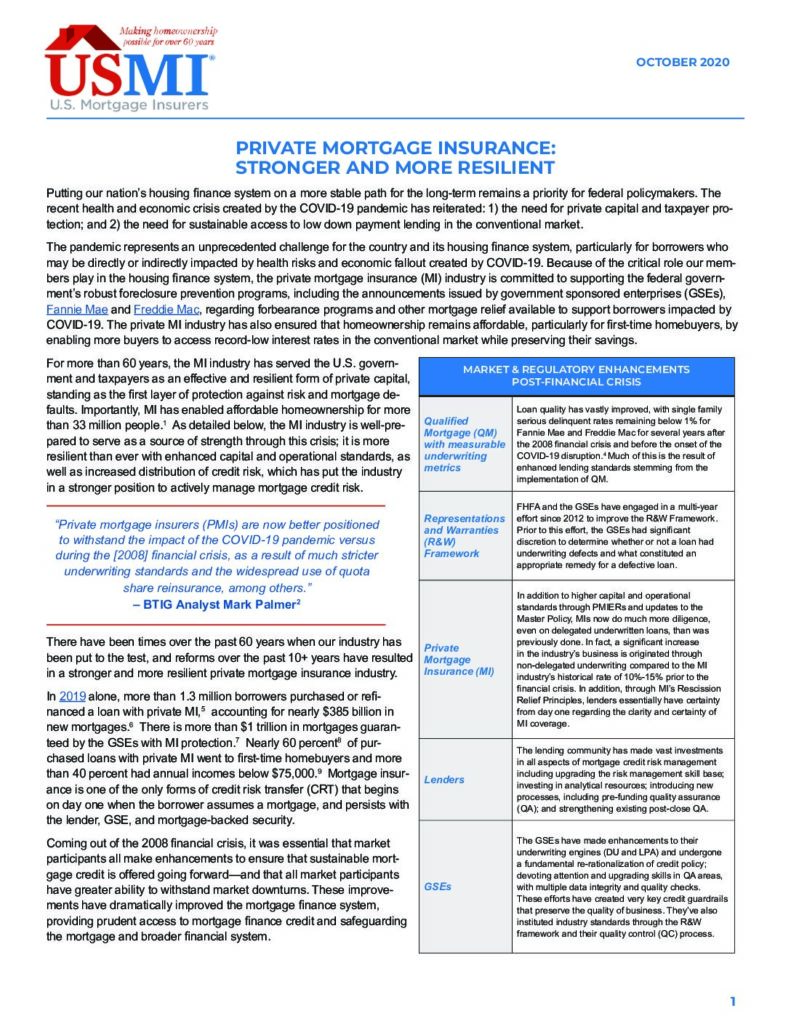By: Lindsey Johnson
Homeownership has been on the rise over the past few years even during the COVID-19 pandemic, but a deeper look at who is able to become a homeowner reveals significant racial and economic gaps. With a growing recognition in Washington of this disparity and a renewed focus on increasing financial security for Black and Hispanic families, policymakers and industry have the opportunity to correct inequities and sustainably increase minority homeownership.
U.S. Census data for the third quarter of 2020 show that homeownership among White households stands at nearly 76 percent, compared to nearly 51 percent for Hispanic households, and 46 percent for Black households. Meanwhile, of the minority borrowers who qualified for home financing, many encountered added costs that make homeownership disproportionately more expensive or altogether out of reach.
COVID-19 has further compounded the racial and economic gap as millions of low- to moderate-income families have lost their jobs and face financial insecurity. The Urban Institute finds that Black and Hispanic homeowners are significantly more likely to face financial hardships and are more at risk of not being able to pay their rent or mortgage payment due to the impacts of the pandemic.
So, while we must focus on the pandemic and its impact on borrowers, and particularly minority borrowers, we must also not lose sight of addressing the longer-term systemic issues that unnecessarily increase costs or create barriers for minority borrowers. Importantly, expanding homeownership opportunities for minority borrowers does not have to be at the expense of the reforms made over the last decade that have drastically improved lending to protect consumers and avoid another housing market collapse. The housing finance system can remain stable and manage mortgage credit risk prudently, while also using data-driven, targeted approaches to reduce barriers to affordable mortgages for Black and Hispanic households.
Mortgage affordability could be further stressed once new regulatory mandates are implemented. This includes new capital requirements for Fannie Mae and Freddie Mac (the GSEs) recently finalized by the Federal Housing Finance Agency (FHFA). While it is essential that the GSEs hold appropriate capital, the rule must be balanced and policymakers should consider changes to elements of the final rule that threaten to raise the cost of mortgages for all borrowers and push homeownership farther out of reach for many families of color.
Additionally, policies that adversely drive up costs for minority borrowers should be re-examined and reduced or eliminated. Loan-level price adjustments (LLPAs) that were introduced by the GSEs in 2008 are especially burdensome for minority and first-time homebuyers. These fees are disproportionately paid by borrowers with lower down payments and credit scores, whose mortgages are already protected by private mortgage insurance. Essentially, borrowers are being double charged for the same risk protection. Industry and consumer advocates — including the National Fair Housing Alliance and the Center for Responsible Lending — have long urged the GSEs to reduce or eliminate these redundant fees.
Further, it is critical that policymakers recognize the role of low down payment mortgage options in facilitating homeownership. In fact, more than 80 percent of first-time homebuyers used low down payment mortgage options in the past several years — with options as low as 3 percent down. While these options have prudently enabled millions of people of all backgrounds to become homeowners, even more targeted down payment assistance programs should be considered for borrowers who may not have intergenerational wealth or equity from a previous home to contribute to a down payment. Legislation like Rep. Al Lawson’s (D-Fla.) First-Time Homeowners Assistance Act should be given close consideration when re-introduced in 2021. Meanwhile, President Biden has already expressed interest in a first-time homebuyer tax credit — a very welcome early signal from the new administration.
There are other issues that warrant attention, such as the low supply of affordable housing and lack of access to financial education. This list goes on, and we recommend that the Biden administration assemble a task force that includes broad representation from industry, consumer advocate community, and government to formulate an action plan, build consensus, and get to work.
As an industry that exists to help low- and middle-income households qualify for low down payment mortgages, private mortgage insurers understand the need to balance responsible lending with access to affordable mortgage finance credit. There are tangible and measurable steps to sustainably expand homeownership for minority families and fortunately there is an eagerness across the housing policy sector to achieve these outcomes.
This piece was first published in The Hill on January 30, 2021.











